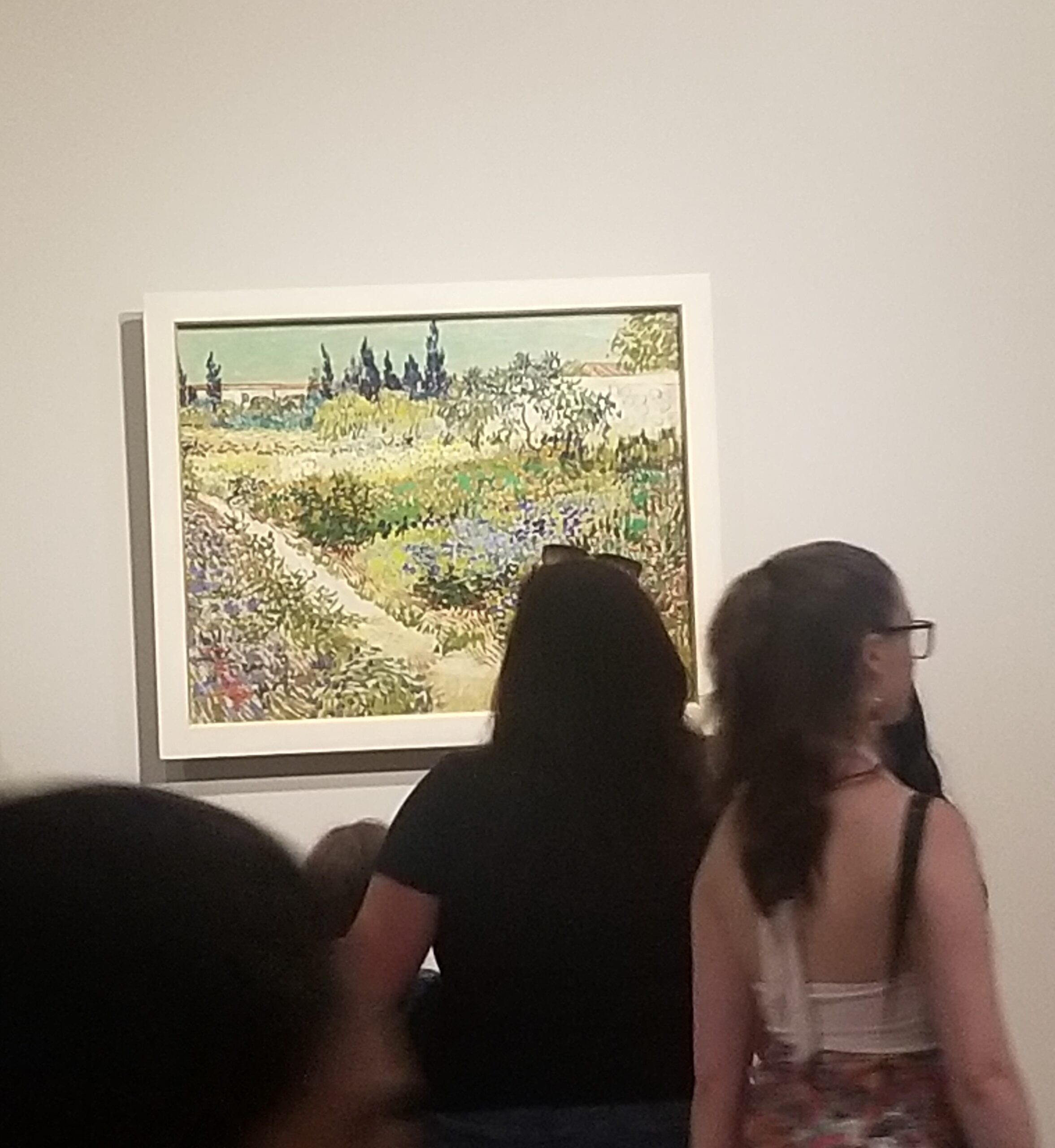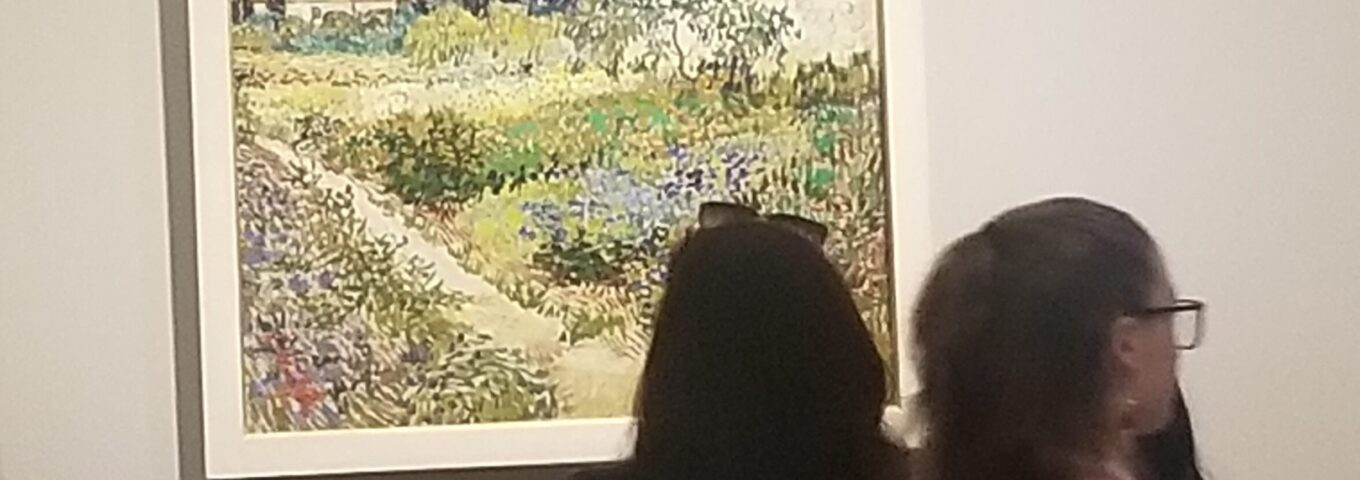Personal Space

“The closer I get to you, the more you’ll make me see…” ~ James Mtume, Reggie Lucas
Do you know your proxemics? Yup, there’s a word for it – the amount of distance you are comfortable with between yourself and others. The personal space necessary for you to feel at ease. Depending on culture, personal history, where you live, and age you may have a different perspective. You may not have given any thought to this, yet, this is important in making a comfortable work environment for everybody.
For instance, my proxemics was challenged this weekend and it reminded me of a blog I wrote a couple of years ago, (https://susangoldbergleadership.com/seeing-beyond-arms-length/). The blog tackled the subject of a “safe zone”; the area of attention to younger professionals who grew up in a culture of iPhones and Droids. (The first iPhone was introduced in 2007).
My personal safety space was invaded viewing the “Van Gogh, Cypress exhibit” at the Metropolitan Museum of Art. It wasn’t the bodies. (However, there was that too.) It was “the flying cellphone brothers”; my nickname for the cellphone which some young people stuck wherever and whenever they wanted to, regardless of where anybody else was standing in relation to them in order to take the “perfect picture of a picture”.
I had phones stuck by my ear (appropriate given the artist), cheekbones, chest, and in front of my face, blocking my vision of the painting. It would have been a great comedy skit if it weren’t so annoying. The etiquette of viewing art and reading the corresponding placard so people around you can view it at the same time is not widely understood or practiced often anymore. And now often in place of a person’s body blocking your view, is someone’s iPhone.
The acceptable standard for public space for strangers in the U.S, is over 10 feet (pre and post Covid), whereas the social space for casual and professional relationships is 4-10 feet. And Americans tend to become extremely uncomfortable when people outside our circle breach that distance. However, if it’s a phone rather than a person’s body squeezing your personal space does this finding still stand?
My Van Gogh experience is something I have discussed with clients. Those who lived a good portion of their lives without iPhones or Droids don’t see their phones as an extension of their physical person, whereas with younger professionals, they do. For instance, in the office, a person who needs their physical space might feel discomfort from a body or another person’s phone that is too close to them.
Because of the variety of perspectives then, how do you make the subject of proxemics including phones universally understood and accepted in your team or organization?
I had a client who led a financial analysis team and who couldn’t understand the importance of the constant proximity of the phone to his non-management younger team members. He thought it was a distraction which kept them from doing their work. I explained my history’s findings working with diverse teams. Then I explored the specific situation. I spoke with the team members individually. The younger team members had sensed some discomfort coming from their boss, but hadn’t been sure where it was coming from because it had never been mentioned. With this information, I gathered the whole team and we developed the phone etiquette best practices for the team which could work for everybody. It was a give and take solution which would work for them.
The ease of the conversation came as a surprise to the boss. It was a welcome subject that cleared the air and opened up the door for more and better conversations and teamwork around other topics. What the senior executive hadn’t appreciated was that everybody understands the concept of the need for personal comfort and safety and appreciates an honest discussion about it, particularly when it is an inclusive one. An inclusive one where each person is heard and can offer an insight or solution.
Wrapping this up, bodily or smartphone proximity can be viewed differently depending on a number of factors. In an art exhibit which challenges your comfort zone, you can choose to ignore it or simply ask politely for some space. In a workplace, you can also choose to ignore it, unless it is quelling productivity or making people uncomfortable. As a leader, personal space is something to be valued, communicated and talked about so everybody feels comfortable and is coming from the same page. It may seem like a nuisance and picky, yet it makes the work culture feel better for all.
Have trepidation about having conversations with your people because you are unsure of how the conversations will go? Even though you understand better communication can help. Contact me at susan@susangoldbergleadership.com . Let’s talk.
I’ve been where you are now standing which is why I’ve worked with different consultants to up my game as a leader too. It’s a strength to understand when you want to move ahead and can benefit from someone else’s experience and resources who have been in your position and can relate to you. To learn more and discover which services within Golden Monocle® may fit your needs, contact me, Susan@SusanGoldbergLeadership.com .
My work as a leadership and communication expert has me go into organizations, as an outside unbiased view to look at the information gaps. Using sensitivity along with proprietary and trademarked solutions including a team mapping tool, Collaboration Beyond Words®, I identify multi-dimensionally what an organization and/or its leaders are missing that’s holding them back from further thriving and continuing to stay relevant. Would you like to see increased ownership of your young professionals while cutting expenses and saving money? Contact me: Susan@SusanGoldbergLeadership.com Let’s talk.








